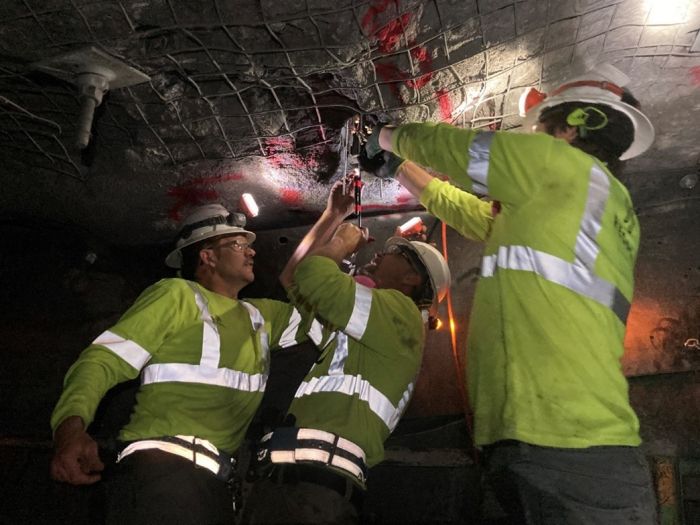






The Homestake Neutrino Experiment—also referred to as the “Davis Experiment” after physicist Ray Davis, who shared the Nobel Prize in Physics in 2002 for his neutrino* work—ran from 1965 to 1994 in the former Homestake Gold Mine in Lead, South Dakota. At 1.48 km (4,850 ft) underground (the “4850 Level”), scientists were certain to be able to filter out most cosmic radiation and be left with, and hopefully count, neutrinos originating in the cores of stars.
The mine closed in 2001 after gold prices dropped but has since been converted into the Sanford Underground Research Facility (SURF) where the international scientific community can perform experiments in a “cosmically clean” environment. Fermilab is constructing a neutrino detector for the Deep Underground Neutrino Experiment (DUNE) on the 4850 Level of SURF, continuing the tradition of detecting neutrinos at Homestake.
Because the required underground caverns are so large, RESPEC was contracted to install instrumentation during construction to detect anomalous rock movements in the ribs and crown of the excavations. They installed 64 four- and five-point multi-point borehole extensometers (MPBX), each 10.1 to 19.8 m (33 to 65 ft) long, in 10.2 cm (4 in.) boreholes drilled into the caverns’ ribs and crowns. RESPEC developed a custom expansion anchor to secure the vertical and angled MPBXs in place while the individual MPBX sensor anchors were inflated. Two inclinometer strings, each consisting of 14 inclinometers, were also installed.
Seven Campbell Scientific CR6 and CR1000X automated monitoring platforms, fourteen Campbell Scientific multiplexers, and several AVW200 vibrating wire interface modules were installed to read data from the sensors. The CR6 and AVW200 devices use Campbell Scientific’s patented VSPECT® vibrating wire technology.
The installation design and process were complicated by the fact that construction crews were continuously blasting and working close to the installations, so sensor installation timing had to be coordinated with other on-site activities. All equipment and sensor cabling had to be protected from fly-rock from nearby blasts.
The Deep Underground Neutrino Experiment will help scientists understand neutrinos better, and perhaps unlock some of the mysteries of the universe. Moreover, the experiment may also help physicists understand why we live in a matter-dominated universe.
*Neutrinos are tiny subatomic particles. They are the most abundant particles having mass in the universe, yet they barely interact with anything else.
For more information about neutrinos in general, visit these web pages:
For more information about research on neutrinos, visit these web pages: